Black History, Music, The Arts
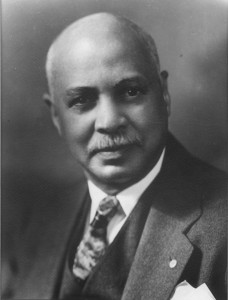
W.C. Handy
1873-1958 b. Florence, Ala. William Christopher Handy was largely self-taught, Handy began his career as a cornet player in a minstrel show in 1896, and later organized various small bands.
He was among the first to set down the blues, and with his Memphis Blues (1912), originally entitled Mr. Crump (1909), he rose to prominence. His songs, such as St. Louis Blues (1914) and Beale Street Blues (1917), are the classic examples of their type.
In 1918 he moved from Memphis to New York City and remained active as a writer and publisher of music, in spite of growing blindness, until shortly before his death. (more…)
Black History, The Arts
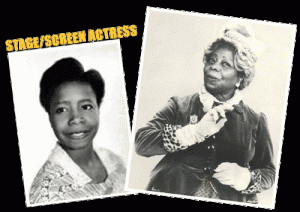
Thelma ‘Butterfly’ McQueen
1811-1995 – Stage and film actress best remembered for her part in film history with Gone With the Wind (1939). McQueen received her nickname of ?Butterfly? when she appeared in the Harlem Theater group’s production of Midsummer Night’s Dream in the Butterfly ballet sequence. Despite the notice she received from her role in Gone With the Wind, roles became harder to get and she was out of films by the 1950s.
She worked at various jobs, including waitress at a soul food restaurant, a receptionist, and dance instructor between occasional acting jobs in small parts on Broadway. She received a bachelor’s degree in political science in 1975 from New York’s City College at the age of 64 and had a radio show in Augusta, Georgia before she died in a fire that consumed her one-bedroom cottage.
Black History, The Arts
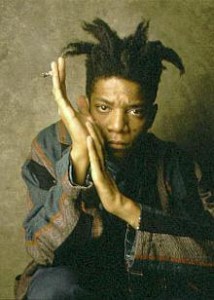
Jean-Michel Basquiat
b. Brooklyn, N.Y. Born into a middle-class Haitian and Puerto Rican family, he was a 1980s art star whose rise and fall were rapid and dramatic. A rebel, high school dropout, and part of the downtown New York scene, he was influenced by the violence of street life and by the life and work of Andy Warhol, who became his mentor.
Basquiat started as a graffiti artist, making images and writing slogans on the walls of buildings, and also produced painted T-shirts, found-object assemblages, and paintings.
In the early 1980s he was ‘discovered’ by the art establishment, and his works in paint and crayon on unprimed canvas, featuring crude, angry, and rawly powerful figures and graffiti-like written messages, were much sought after by collectors.
Basquiat’s art focused on “suggestive dichotomies,” such as wealth versus poverty, integration versus segregation, and inner versus outer experience. Basquiat appropriated poetry, drawing and painting, and married text and image, abstraction and figuration, and historical information mixed with contemporary critique. (more…)
Black History, The Arts

Big Joe Turner
One of the key figures, the vehicle we took from R&B to Rock N’Roll, was Big Joe Turner. Born in 1911 in Kansas City, Big Joe’s dad was killed when he was 15. To help his family, Joe worked at a variety of odd jobs..from shining shoes to running liquor. In 1929 he began to play boogie-woogie with Kermit “Pete” Johnson in clubs around the Midwest. They were discovered and brought to New York to play Carnegie Hall.
The next week they began recording for a label and a star was born. Joe was characterized by his incredible deep singing voice. He didn’t play any instruments, his voice was all he needed. New York Times music critic Robert Palmer said: “…his voice, pushing like a Count Basie solo, rich and grainy as a section of saxophones, which dominated the room with the sheer sumptuousness of its sound.” Big Joe died of kidney failure in 1985..
Black History, The Arts
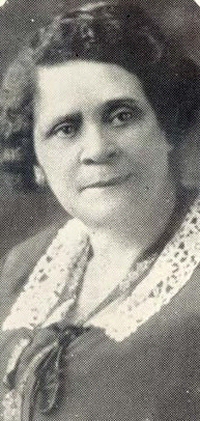
Hallie Quinn Brown
Hallie Quinn Brown was born in Pittsburgh, Pennsylvania in 1845, the daughter of two former slaves. Her father, Thomas Arthur Brown, became known as “Mr. Brown, the walking encyclopedia.” Brown’s mother, Frances Jane Scroggins, was also well educated; she was an unofficial advisor and counselor to the students of Wilberforce school, a private, coed, liberal arts college. Both Thomas and Frances were actively involved with the Underground Railroad. Her parents’ commitment to the cause would later influence the organizations Brown founded and participated in.
Brown’s family moved from Pittsburgh to Canada in 1864 and then to Wilberforce, Ohio, in 1870. In Ohio, the author experienced her first all black school at Wilberforce University. Brown graduated in 1873 with a Bachelor of Science degree. After graduation, she began teaching on the Senora Plantation in Mississippi and went on to teach on several plantations during her life. (more…)
Black History, The Arts
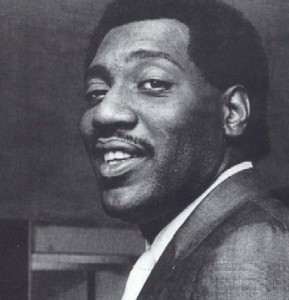
Otis Redding
Born in 1941, Otis Redding was the ultimate R&B singer.His sound was deeply rooted in gospel and country blues, but he tempered it with the mellower pop sound of Sam Cooke. He first became interested in singing by participating in church choirs. He sang at clubs and dances, joining a band in 1959.
He made had his first recording with that band in 1960 and at the end of the session he had the chance to cut two of his own songs. His soulful sound caught the ear of the president of Stax Records who signed him to a subsidiary label, Volt. Over the next two years he released several hits, and became an R&B star, but he never achieved overwhelming fame.
Sadly, it was only after his sudden and tragic death in a plane crash at the age of 26 in 1967, that he became the legendary star that he is now. Volt released “Dock of The Bay” after his death and it was Otis’s biggest record.





